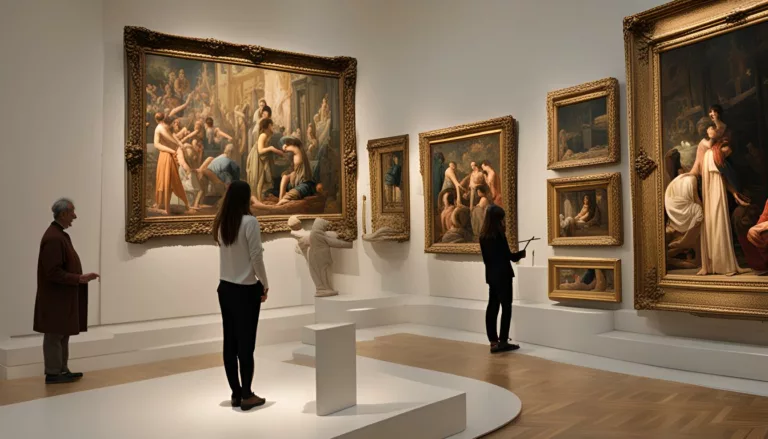The Impressionism School of Painting: A Revolution in Color
Impressionism was one of the most revolutionary movements in the history of art. Emerging in France in the 19th century, it broke away from the rigid traditions of academic painting and introduced a fresh, dynamic, and innovative approach to capturing the world. Impressionist artists sought to depict the fleeting moments of life, emphasizing light, color, and movement rather than precise details and rigid compositions. Their radical techniques and unconventional subject matter initially faced fierce criticism, but over time, Impressionism became one of the most beloved and influential art movements.
This article will explore the origins of Impressionism, its key characteristics, the major artists involved, and its lasting impact on the art world.
The Origins of Impressionism
The Historical Context
The mid-19th century was a time of significant social, political, and technological change in Europe, especially in France. The Industrial Revolution had transformed cities, photography had emerged as a new visual medium, and scientific discoveries were changing the way people understood light and color. Meanwhile, the rigid academic system of the École des Beaux-Arts in Paris, which dictated artistic conventions, favored historical, religious, and mythological subjects painted in a highly detailed, realistic style.
However, a group of young artists, dissatisfied with the strict rules of the Académie des Beaux-Arts and the Salon (the official art exhibition of the French Academy), sought to break free from these constraints. They wanted to paint contemporary life, nature, and the effects of light in a way that was more immediate and true to their personal vision.
The First Impressionist Exhibition
The name “Impressionism” was derived from Claude Monet’s painting Impression, Sunrise (1872), which was exhibited in the first independent Impressionist exhibition in 1874. A critic, Louis Leroy, mockingly used the term “Impressionists” to describe the group, implying that their work was unfinished and lacked substance. However, the artists embraced the term, and it became the official name of the movement.
The exhibition, organized by Monet, Pierre-Auguste Renoir, Edgar Degas, Camille Pissarro, and others, was a bold challenge to the art establishment. Their paintings, characterized by loose brushwork, bright colors, and depictions of everyday scenes, shocked traditionalists but captivated a new generation of art lovers.
Key Characteristics of Impressionism
1. Light and Color
One of the defining features of Impressionism was the artists’ fascination with light and its changing effects. Unlike traditional painters who used dark, shadowy underpaintings, Impressionists applied pure, vibrant colors directly onto the canvas. They used short, broken brushstrokes to capture the movement of light, making their paintings appear luminous and lively.
2. Loose and Expressive Brushwork
Instead of meticulously blending colors, Impressionists used quick, visible brushstrokes to create a sense of immediacy and spontaneity. This technique gave their works a fresh, modern look and allowed them to capture fleeting moments with great energy.
3. Everyday Life as a Subject
Unlike the academic painters who focused on historical or mythological themes, Impressionists painted scenes from contemporary life. They depicted urban landscapes, cafés, dancers, street scenes, and outdoor leisure activities. Their goal was to show the beauty of ordinary moments rather than grand, dramatic narratives.
4. The Influence of Photography and Japanese Art
The rise of photography influenced Impressionist artists by encouraging them to experiment with composition, cropping, and unusual perspectives. At the same time, Japanese prints (Japonisme) inspired them with their bold colors, asymmetrical compositions, and emphasis on nature. Artists such as Monet and Degas admired Japanese woodblock prints and incorporated their elements into their works.
5. Plein Air Painting (Outdoor Painting)
Thanks to advances in paint technology, which allowed for the production of portable paint tubes, Impressionists could work outdoors (plein air) rather than in studios. This enabled them to capture the natural light, atmosphere, and colors of the landscape more accurately. Monet, in particular, was famous for painting the same scene at different times of the day to study how light transformed it.
Major Impressionist Artists
1. Claude Monet (1840–1926)
Monet is considered the leading figure of Impressionism. His works, such as Water Lilies, Impression, Sunrise, and Rouen Cathedral series, exemplify the movement’s focus on light and color. His innovative approach laid the foundation for modern art.
2. Pierre-Auguste Renoir (1841–1919)
Renoir was known for his joyful depictions of social gatherings, particularly scenes of people dancing, dining, and enjoying life. His masterpiece Luncheon of the Boating Party captures the essence of Impressionist style with its vibrant colors and lively atmosphere.
3. Edgar Degas (1834–1917)
Degas focused on movement, especially in his paintings of ballet dancers. Unlike other Impressionists, he often worked indoors and experimented with unusual perspectives. His pastel works, such as The Ballet Class, demonstrate his mastery of capturing human motion.
4. Camille Pissarro (1830–1903)
Pissarro was the oldest of the Impressionists and played a significant role in uniting the group. He painted rural landscapes, cityscapes, and working-class life, showing a deep sensitivity to nature and people.
5. Berthe Morisot (1841–1895)
One of the few female Impressionists, Morisot painted domestic life, women, and children with a delicate touch. Her work The Cradle is a beautiful example of her intimate, impressionistic style.
The Legacy of Impressionism
Although Impressionism was initially rejected by critics, it eventually gained widespread acceptance and transformed the art world. Its influence extended beyond painting and inspired movements such as Post-Impressionism, Fauvism, and even Modernism. Artists like Vincent van Gogh, Paul Cézanne, and Henri Matisse were all deeply influenced by the Impressionist approach to color and form.
Furthermore, Impressionism changed the way people perceive art. It encouraged artists to express their personal vision rather than follow strict academic rules. Today, Impressionist paintings are among the most celebrated and valuable artworks in the world, admired for their beauty, innovation, and emotional depth.
Conclusion
Impressionism was more than just a style of painting—it was a revolution in the way artists saw and represented the world. By prioritizing light, color, and everyday life over rigid academic traditions, the Impressionists paved the way for modern art. Their works continue to captivate audiences worldwide, reminding us of the power of artistic freedom and the beauty of fleeting moments.
From Monet’s shimmering water lilies to Renoir’s vibrant social scenes, Impressionism remains one of the most beloved and influential movements in art history. It not only changed the course of painting but also reshaped the way we experience and appreciate the visual world.






